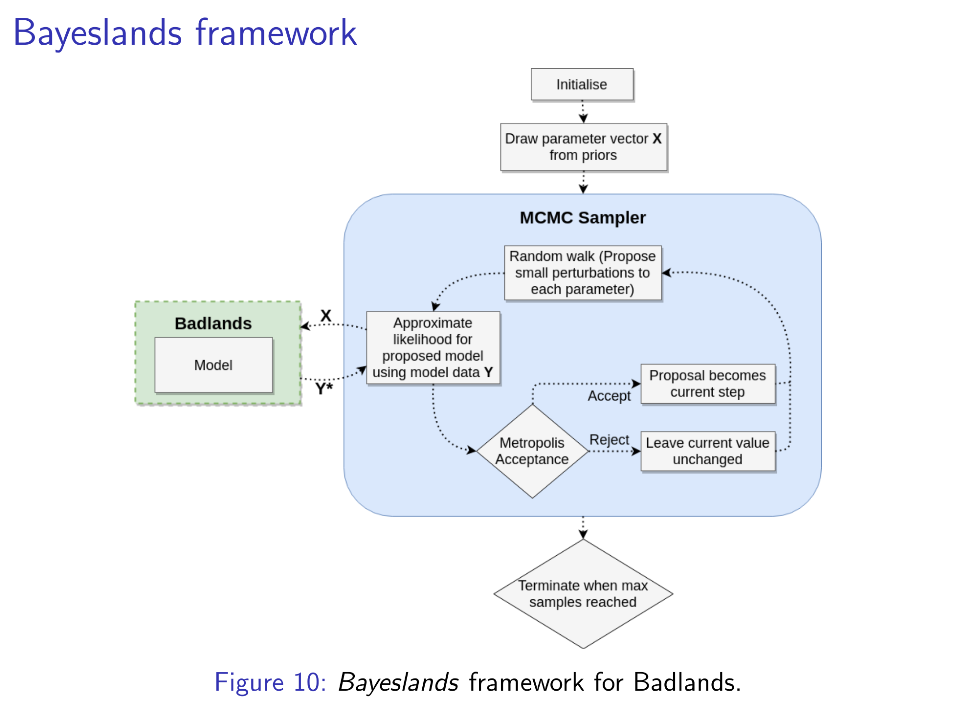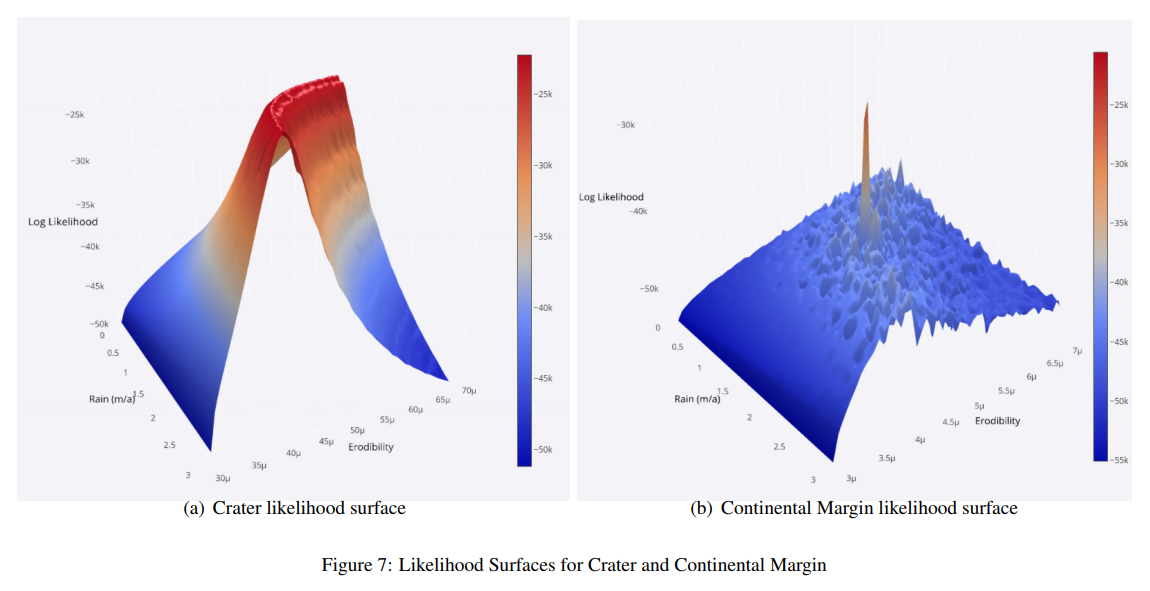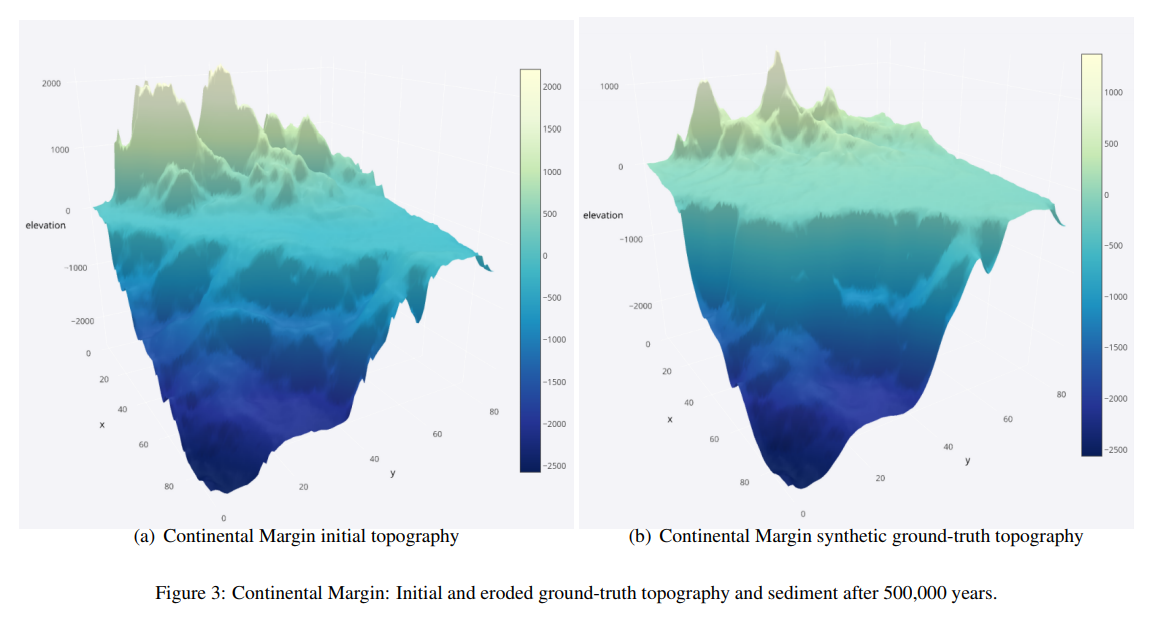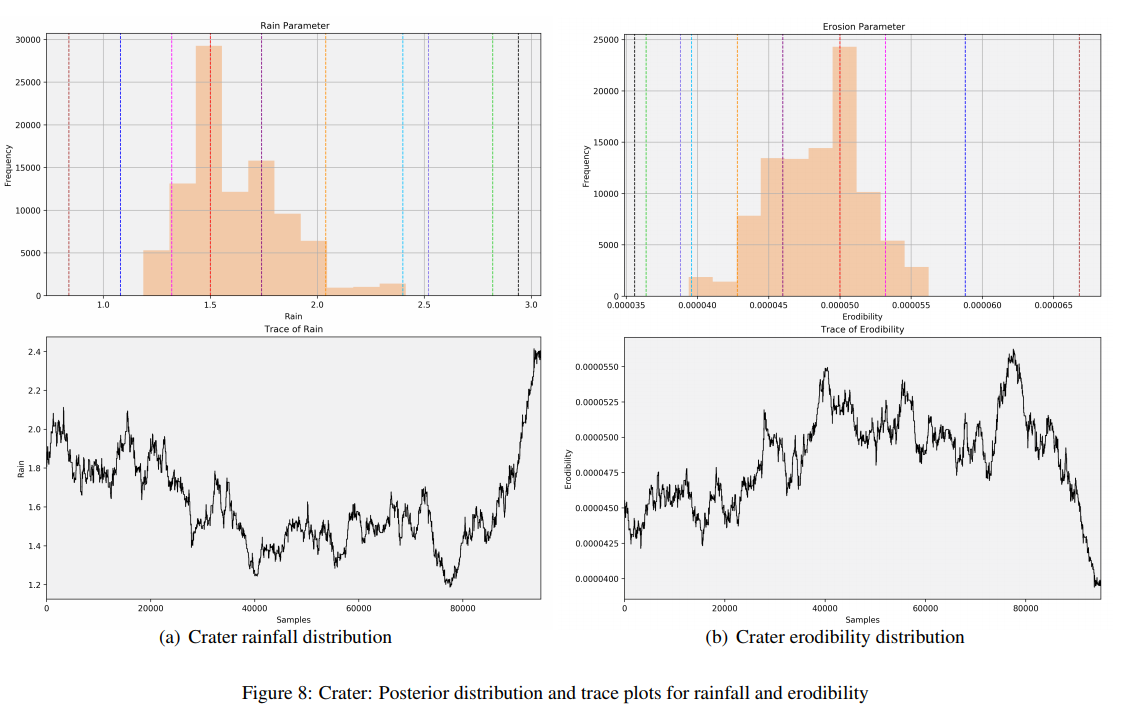Bayeslands Workshop
Part of the Badlands (Basin and landscape Dynamics) suite from the The University of Sydney.
These materials are designed to give you a brief introduction to the Badlands (BAsin nD LANdscape DynamicS) modelling code, extended functionality provided by pyBadlands, the Bayesian inference methods in Bayeslands, and additional helper tools. See https://github.com/badlands-model/pyBadlands and the repositories therin for details on various Badlands/Bayeslands incantations.
Badlands, Bayeslands, What?
Badlands is the code (originally written in Fortran) to model surface processes.
pyBadlands was an extension to Badlands that allowed for easy manipulation of model parameters, input files, execution, etc via the Python programming language.
Bayeslands uses pyBadlands and applies Bayesian inference to the Badlands models to essentially provide estimates of error. It runs 1000’s of Badlands models with slightly different parameter choices, and compares the results against a ‘known’ solution to estimate an error. There are different versions of Bayeslands being developed that use different techniques (paralleltempering, surrogate assissted) to optimise accuracy and exploration efficiency in the models with different trade-offs.

Installation
The repository is on GitHub at http://github.com/badlands-model/Bayeslands_Workshop
There are a couple of ways to run Bayeslands on your system and installation instructions are provided on the GitHub repository page.
Seminar Presentation
PDF – Presentation Slides



Video Recording and Tutorials
Part 1 – Setup and Installation
Part 2 – Seminar Talk
Part 3 – MCMC and Parallel Tempering tutorial
Papers
Bayeslands https://arxiv.org/abs/1805.03696
Parallel Tempering Bayeslands https://arxiv.org/abs/1806.10939
Links
Jupyter Notebooks
Bayes, Probability, and Statistics
![]()
